Embark on a journey into the realm of timeless mango farming in Thailand, focusing on the art of planting and nurturing the illustrious Katimon Mango. This blog aims to intricacies of mango cultivation, offering practical insights for enthusiasts and farmers alike. Dive into the essentials of Katimon Mango farming, unlocking the secrets to a successful and fruitful harvest. Join us as we explore the nuances of cultivating this renowned mango variety in the vibrant landscape of Thailand.
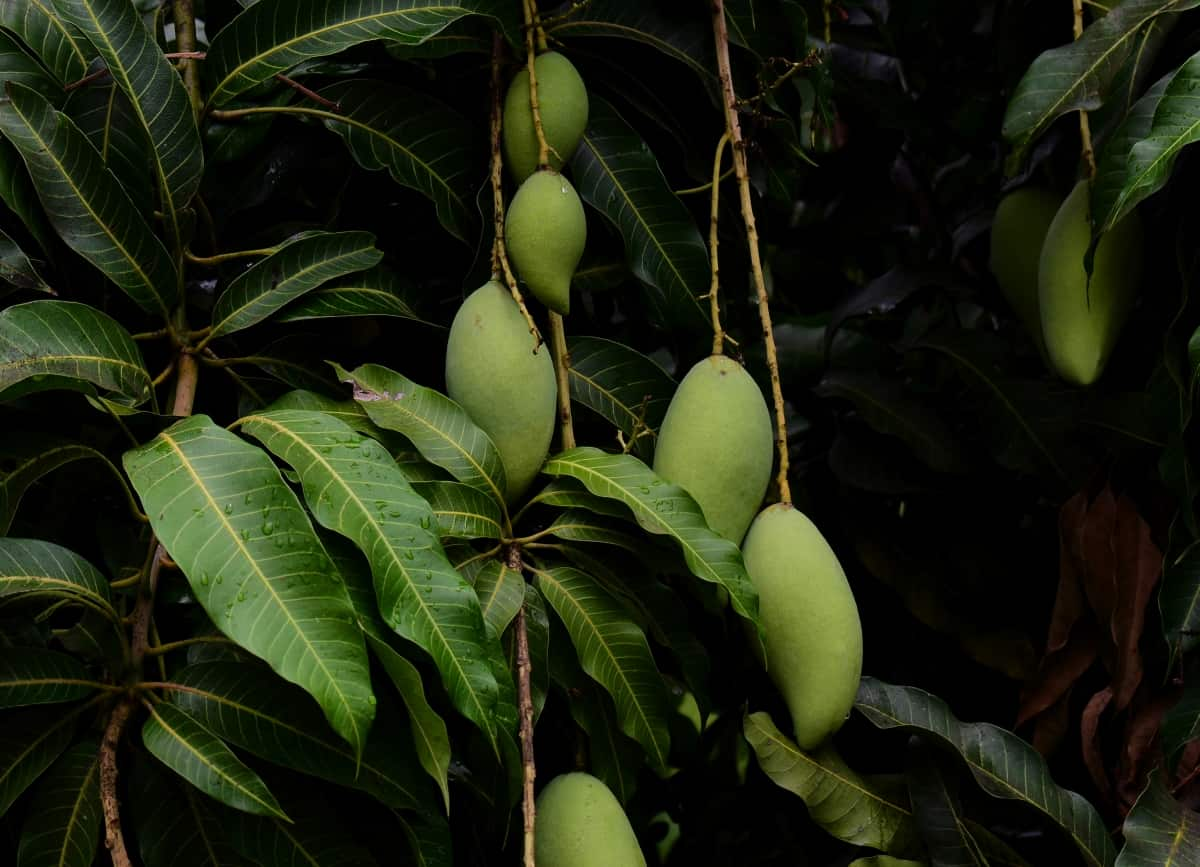
Thailand All Time Mango Farming
Overview of Mango Farming in Thailand
Mango is one of the most important fruit crops in Thailand, both for domestic consumption and export. Thailand is the third largest mango producer in the world, after India and China, with an annual production of about 3.4 million tons. Mango is grown in almost all regions of Thailand, but the major production areas are in the central, eastern, and northeastern regions. The main varieties grown in Thailand are Nam Dok Mai, Maha Chanok, Chok Anan, Ok Rong, Keo Savoy, Rad, and Katimon.
Katimon Mango: A Popular Thai Variety
Katimon mango, also known as Catimon or All-Time mango, is an exceptional variety of Thailand that produces quality mangoes throughout the year. It is a hybrid between Nam Dok Mai and Amrapali, developed by the Department of Agriculture of Thailand. Katimon mango is sweeter than Amrapali and has a pleasant aroma. It has yellow skin with a red blush and yellow-orange flesh. The fruit is medium-sized, weighing about 200-300 grams, and has a thin seed. Katimon mango is suitable for fresh consumption, processing, and export.
Katimon Mango Growing Areas in Thailand
Katimon mango is grown in several provinces of Thailand, such as Chachoengsao, Chanthaburi, Rayong, Nakhon Ratchasima, Nakhon Nayok, Prachin Buri, and Saraburi. These provinces have suitable climatic and soil conditions for Katimon mango cultivation. The total area under Katimon mango cultivation in Thailand is estimated at 10,000 hectares.
In case you missed it: Mango Farming in Kenya: A Comprehensive Guide to Sweet Success
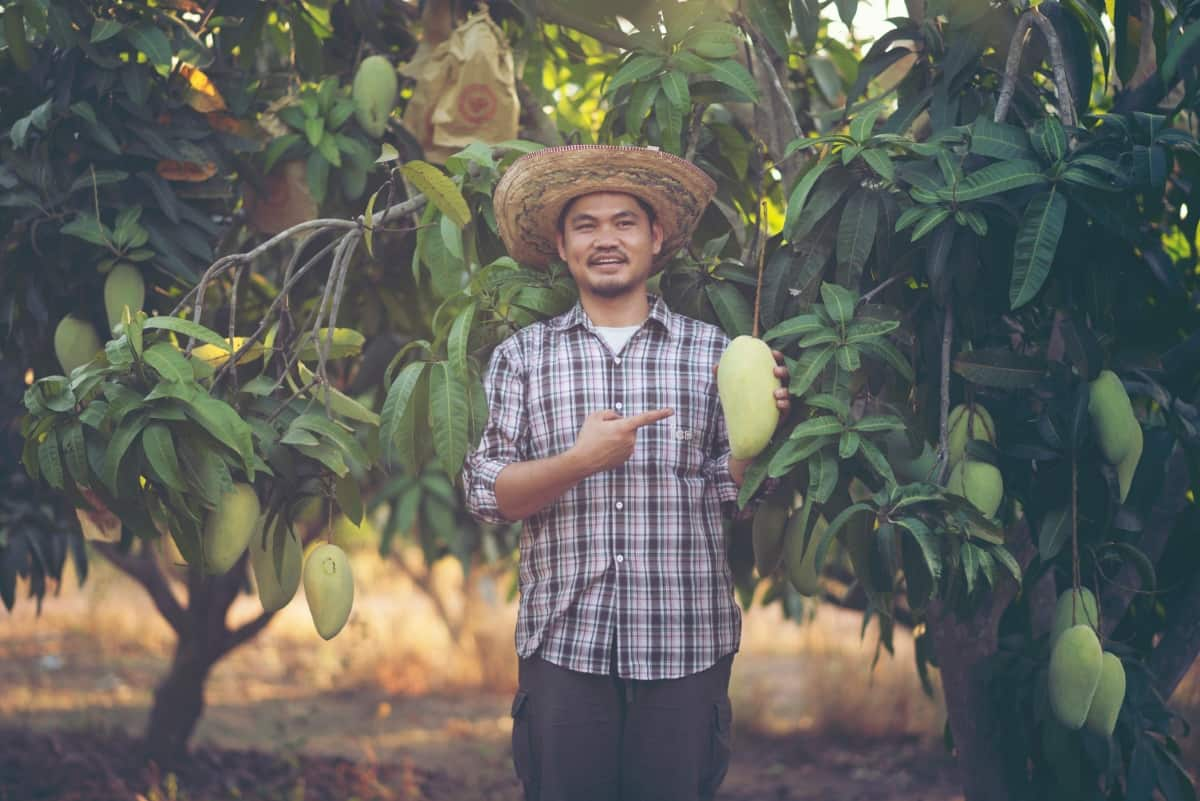
Climate and Soil Requirements for Mango Farming in Thailand
Mango is a tropical fruit that requires a warm and sunny climate for optimum growth and fruiting. The ideal temperature range for mango cultivation is 24-30°C, with a minimum of 15°C and a maximum of 40°C. Mango can tolerate drought but not waterlogging or flooding. Mango also needs a distinct dry season of 3-4 months to induce flowering and fruiting.
The soil for mango cultivation should be well-drained, fertile, and rich in organic matter. The pH range for mango cultivation is 5.5-7.5. Mango can grow on various soil types, such as sandy loam, clay loam, and laterite, but it prefers deep soils with good water-holding capacity.
Site Selection and Preparation for Mango Farming
- The site should have good access to water sources, roads, markets, and labor.
- The site should have adequate sunlight exposure and air circulation.
- The site should be free from pests and diseases that affect mango trees.
- The site should be leveled and cleared of weeds, stones, and other debris.
- The site should be plowed and harrowed to improve soil structure and fertility.
- The site should be enriched with organic manure or compost at the rate of 10-20 tons per hectare before planting.
Propagation and Planting Techniques for Katimon Mango
Katimon mango can be propagated by seeds or vegetative methods, such as grafting or budding. However, seed propagation is not recommended because it takes longer to bear fruits and produces variable offspring. Vegetative propagation ensures uniformity, early fruiting, and true-to-type plants. The most common method of vegetative propagation for Katimon mango is grafting. Grafting involves joining a scion (shoot) of Katimon mango to a rootstock (seedling) of another mango variety that is compatible and resistant to pests and diseases.
The rootstock should be 6-12 months old and have a stem diameter of 1-2 cm. The scion should be 15-20 cm long and have 2-3 buds. The grafting method used for Katimon mango is cleft grafting or wedge grafting. The best time for grafting Katimon mango is during the rainy season (June-August) or the cool season (November-January). The grafted plants should be kept in a nursery under partial shade for 3-4 months until they are well-established. The grafted plants should be watered regularly and protected from pests and diseases.
In case you missed it: How to Grow Miyazaki Mango from Scratch: A Step-by-Step Cultivation Guide
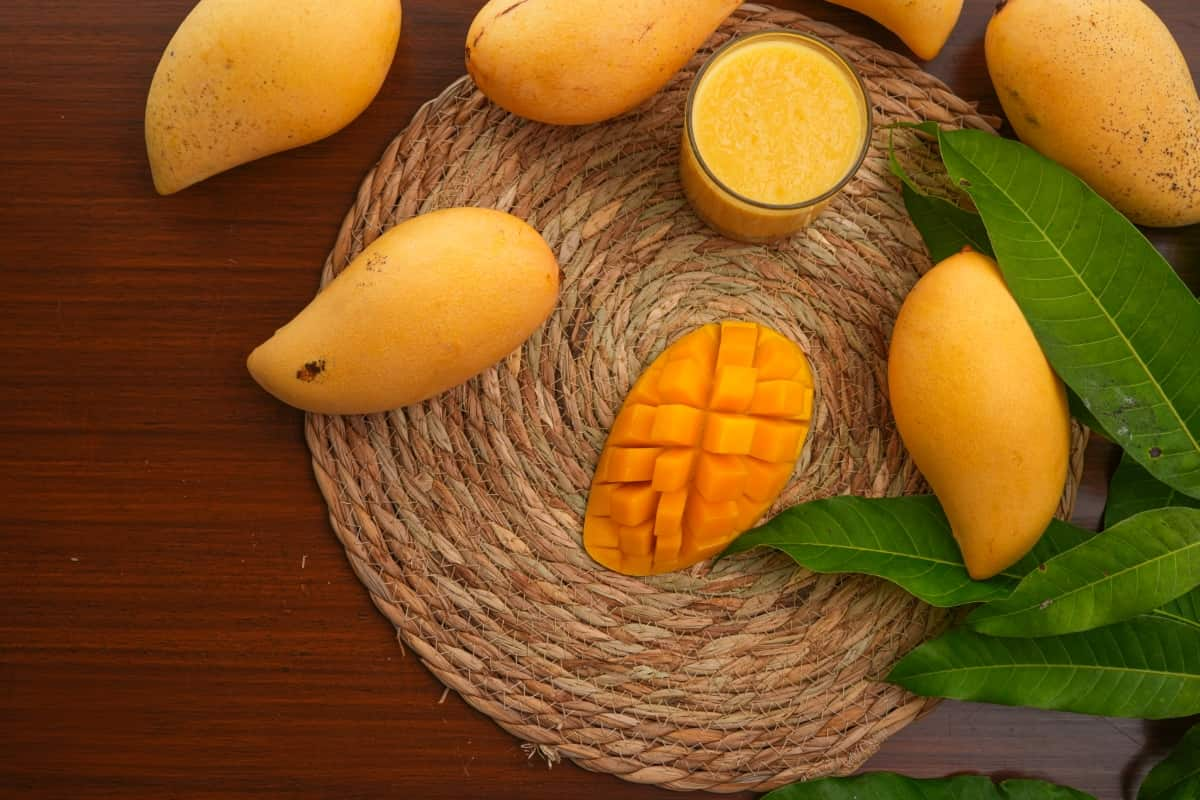
The planting distance for Katimon mango depends on the soil type, irrigation system, and pruning method. Generally, the planting distance ranges from 8 x 8 m to 10 x 10 m, allowing 100-156 plants per hectare. The planting holes should be dug at least one month before planting and filled with a mixture of topsoil and organic manure or compost. The grafted plants should be planted at the same depth as they were in the nursery bags.
Care and Maintenance of Mango Trees
Mango trees require regular care and maintenance to ensure healthy growth and high yield. The main practices involved in mango tree care and maintenance are
Irrigation: Mango trees need adequate water for growth and fruiting, especially during the flowering and fruit development stages. The water requirement of mango trees depends on the soil type, climate, and tree age. Generally, mango trees need 600-800 mm of water per year, which can be supplied by rainfall or irrigation. The irrigation method used for mango trees is drip irrigation, which saves water and reduces weed growth.
Fertilization: Mango trees need balanced nutrition, especially nitrogen, phosphorus, potassium, calcium, magnesium, and zinc, for growth and fruiting. The fertilizer requirement of mango trees depends on the soil type, tree age, and yield. Generally, mango trees need 0.5-1 kg of nitrogen, 0.2-0.4 kg of phosphorus, and 0.3-0.6 kg of potassium per tree per year, which can be applied in two or three split doses during the rainy season (June-August), and the cool season (November-January).
The fertilizer should be applied in a circular band around the tree canopy, avoiding contact with the trunk and roots. Organic manure or compost can also be applied at the rate of 10-20 kg per tree per year to improve soil fertility and organic matter.
Pruning: Mango trees need periodic pruning to maintain their shape, size, and productivity. Pruning involves removing dead, diseased, damaged, or unwanted branches from the tree. The pruning method used for Katimon mango is tip pruning or heading back, which involves cutting back the terminal buds of the branches to stimulate lateral branching and fruiting. The best time for pruning Katimon mango is after harvesting or during the dry season (February-March). The pruning tools should be sharp and disinfected to prevent infection and damage.
Pest and Disease Management: Mango trees are susceptible to pests, diseases that affect their growth and yield. The main pests that attack mango trees are mango hoppers, fruit flies, mealybugs, scales, mites, borers, and termites. The main diseases that affect mango trees are anthracnose, powdery mildew, bacterial canker, dieback, and gummosis. The pest and disease management of mango trees involves a combination of cultural, mechanical, biological, and chemical methods.
Cultural Methods
- Selecting resistant varieties.
- Maintaining proper sanitation.
- Removing infected plant parts.
- Avoiding overwatering and overfertilization.
- Practicing crop rotation and intercropping.
- Mechanical methods include using traps, barriers, nets, bags, or screens to prevent or reduce pest infestation.
- Biological methods include using natural enemies, such as predators, parasitoids, or pathogens, to control pests.
- Chemical methods include using pesticides, such as insecticides, fungicides, or bactericides, to control pests or diseases. The pesticides should be applied at the right time, dose, and frequency to avoid resistance development or environmental contamination.
In case you missed it: Key Rules to Get Rid of Fruit Fly in Mango: Symptoms, How to Treat, Management, Chemical, and Organic Control
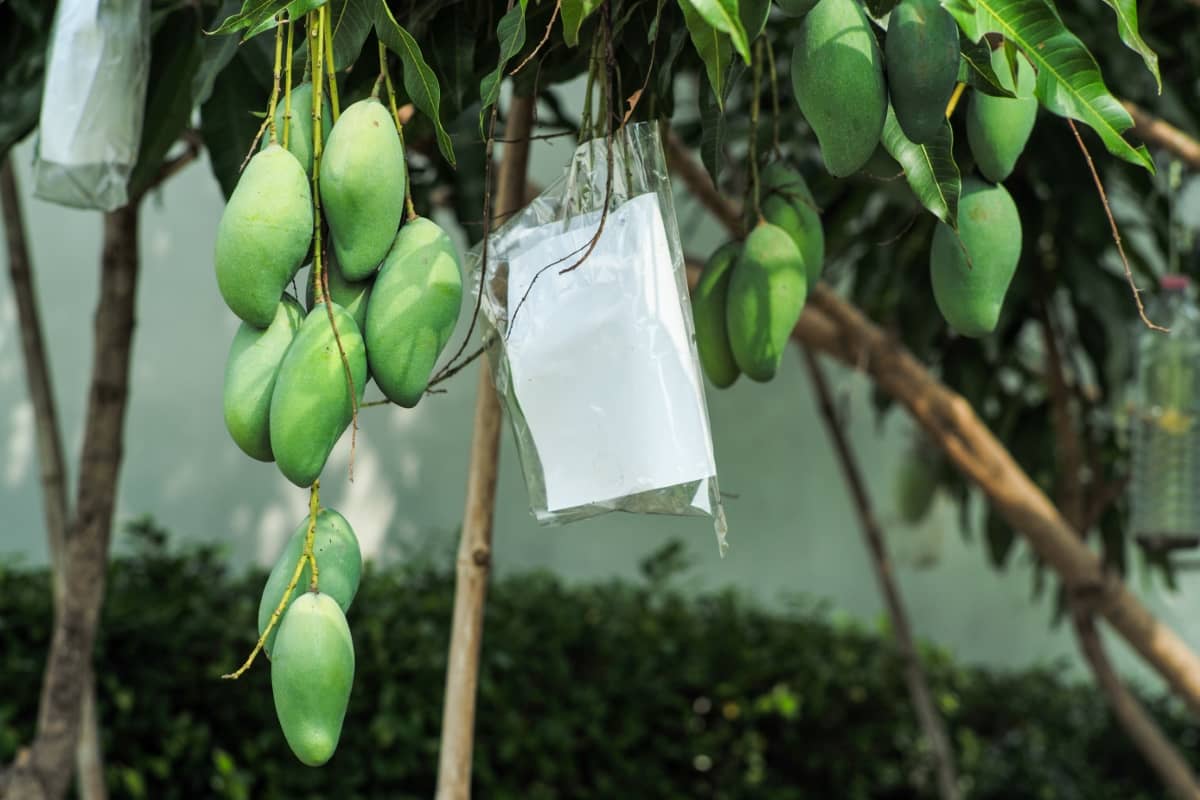
Irrigation and Water Management for Mango Orchards
Mango orchards require efficient irrigation and water management to ensure optimum growth and yield of mango trees. Irrigation and water management involves supplying adequate water to the orchard at the right time and amount, as well as conserving water and preventing water loss or wastage. The irrigation system used for mango orchards is drip irrigation, which delivers water to the root zone of the plants through emitters or drippers. Drip irrigation saves water by reducing evaporation, runoff, and leaching losses.
Drip irrigation also reduces weed growth by keeping the soil surface dry. The irrigation schedule for mango orchards depends on the soil type, climate, tree age, and stage of growth. Generally, mango orchards need 600-800 mm of water per year, which can be supplied by rainfall or irrigation. The irrigation frequency ranges from once a week to once a month, depending on the soil moisture status and weather conditions. The irrigation amount ranges from 10-20 liters per tree per day, depending on the tree size and canopy area.
Water conservation is crucial for mango orchards, requiring various techniques to reduce water demand or increase availability. These include mulching, which covers soil with organic or inorganic materials; rainwater harvesting, which collects rainwater from rooftops and stores it for irrigation; and water recycling, which repurposes wastewater from domestic or industrial sources after treatment. These methods help maintain water quality and reduce evaporation loss in the orchard.
Pollination and Fruit Set in Katimon Mango Trees
Katimon mango is a hybrid variety of mango that originated in Thailand. It is also known as katimon or All-Time mango because it can produce fruits three to four times a year, even when the season is not in full swing. Katimon mango trees are self-pollinating, which means they do not need another tree of the same or different variety to produce fruits.
However, cross-pollination by insects or wind can increase the fruit set and quality of Katimon mangoes. To ensure good pollination and fruit set, Katimon mango trees should be planted 8 to 10 meters apart and pruned regularly to maintain a balanced canopy and air circulation.
Fruit Growth and Development Stages of Katimon Mango
- Flowering stage: This stage lasts for about 15 to 20 days, during which the tree produces small white flowers that attract pollinators.
- Fruit set stage: This stage lasts for about 10 to 15 days, during which some of the flowers develop into tiny fruits that are called fruitlets.
- Fruit development stage: This stage lasts for about 90 to 120 days, during which the fruitlets grow in size and weight and accumulate sugars and acids in their flesh.
- Ripening stage: This stage lasts for about 10 to 15 days, during which the fruits change color from green to yellow and develop their characteristic flavor and aroma.
Harvesting and Postharvest Handling of Katimon Mangoes
Katimon mangoes are ready for harvesting when they reach their full size and color. They can be harvested by hand or by using a pole with a hook or a net attached to it. The harvested fruits should be handled carefully to avoid bruising or damage. They should be sorted according to their size, color, and quality and packed in crates or boxes with cushioning materials such as straw or paper.
In case you missed it: How to Start Kesar Mango Farming: A Cultivation Guide to Planting to Harvesting
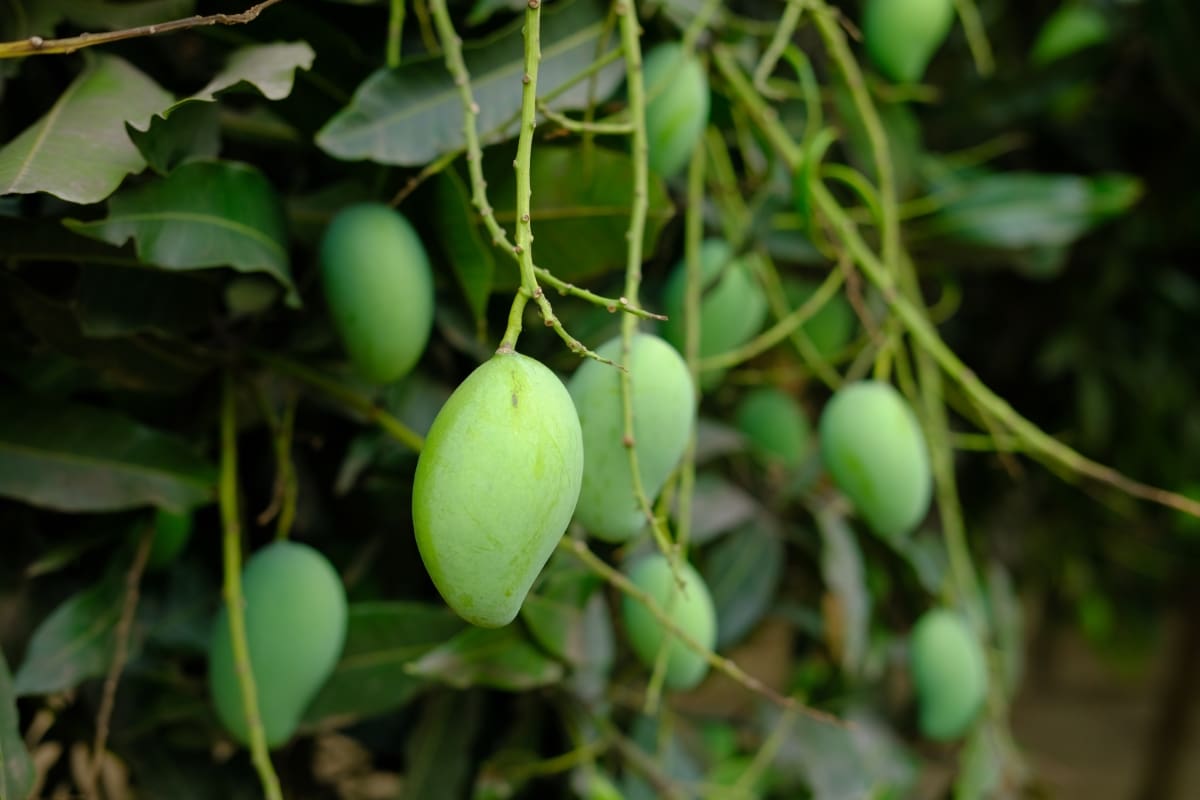
The harvested fruits should be stored cool, dry place away from direct sunlight and ethylene sources such as ripening fruits or vegetables. The optimal storage temperature for Katimon mangoes is 12 to 14 degrees Celsius, and the optimal relative humidity is 85 to 90 percent. Under these conditions, Katimon mangoes can be stored for up to three weeks without losing their quality.
Katimon Mango Tree Price and Taste
Katimon mango trees are grafted plants that can be bought from nurseries or online stores. Generally, a one- to two-foot tall Katimon mango tree costs about Rs. 449 to Rs. 699, while a three- to four-foot tall Katimon mango tree costs about Rs. 1000 to Rs. 1500. The taste of Katimon mangoes is sweet and delicious, with a hint of sourness. Some people compare it to the taste of Alphonso or Amrapali mangoes, but it is sweeter. Katimon mangoes are suitable for eating fresh or making juices, jams, pickles, or desserts.
Economic Sustainability in Thai Mango Farming
Mango farming is a crucial agricultural activity in Thailand, providing income and employment for millions of farmers and contributing to the country’s export earnings. Thailand produces 3.5 million tons of mangoes annually, with 10% exported. However, farmers face challenges such as low productivity, high production costs, fluctuating market prices, pests, diseases, climate change, and competition from other countries. To achieve economic sustainability, strategies include:
- Adopting improved varieties and cultivation practices.
- Diversifying the product portfolio.
- Strengthening market linkages.
- Enhancing farmers’ capacity and skills through training and innovation.
- Promoting certification and branding of Thai mangoes to increase their recognition and demand in the global market.
Challenges and Opportunities in Thai Mango Farming
Thai mango farming faces numerous challenges, including low productivity, high production costs, fluctuating market prices, pests and diseases, and climate change. The average yield of Thai mangoes is 10 tons per hectare, which is lower than the world average of 15 tons per hectare. Factors such as poor soil fertility, inadequate irrigation, lack of pruning, pest and disease infestation, and climatic variability contribute to this issue.
High production costs are a significant factor, reducing the profitability and competitiveness of Thai mango farmers. Market prices are volatile, varying from 5 to 50 baht per kilogram depending on the season, quality, and variety. Climate change is also affecting the growth and development of Thai mangoes by altering temperature, rainfall, humidity, and sunshine patterns, affecting the fruiting, fruiting, ripening, and quality of the mangoes. These changes can also increase the incidence and severity of pests and diseases.
However, Thai mango farming offers opportunities such as growing demand due to its unique taste, aroma, color, shape, and nutritional value. Growing markets in Asia, Europe, America, and Australia are driving international demand, while rising populations, incomes, urbanization, and health awareness are driving domestic demand.
Mango Production Status and Statistics in Thailand
Mango is one of the most important fruit crops in Thailand, with a cultivated area of 286,697 hectares and a production of 2,218,262 tons in 2006. The production index of tropical fruits in Thailand, which includes mango, tangerine, durian, longan, rambutan, and mangosteen, was 231.76 points in April 2023. Food and Agriculture Organization, Thailand produced 2,362,000 tons of fresh mangoes in 2019.
| Year | Production (tons) |
| 2015 | 2,100,000 |
| 2016 | 2,200,000 |
| 2017 | 2,300,000 |
| 2018 | 2,400,000 |
| 2019 | 2,362,000 |
Most of the mangos produced in Thailand are consumed domestically, although some (about 10%) are exported in fresh or processed form. The main export markets for Thai mangos are China, Japan, Hong Kong, Singapore, and Malaysia.
In case you missed it: Banganapalli Mango Farming in India: A Guide to Planting, Care, Pests and Disease Management
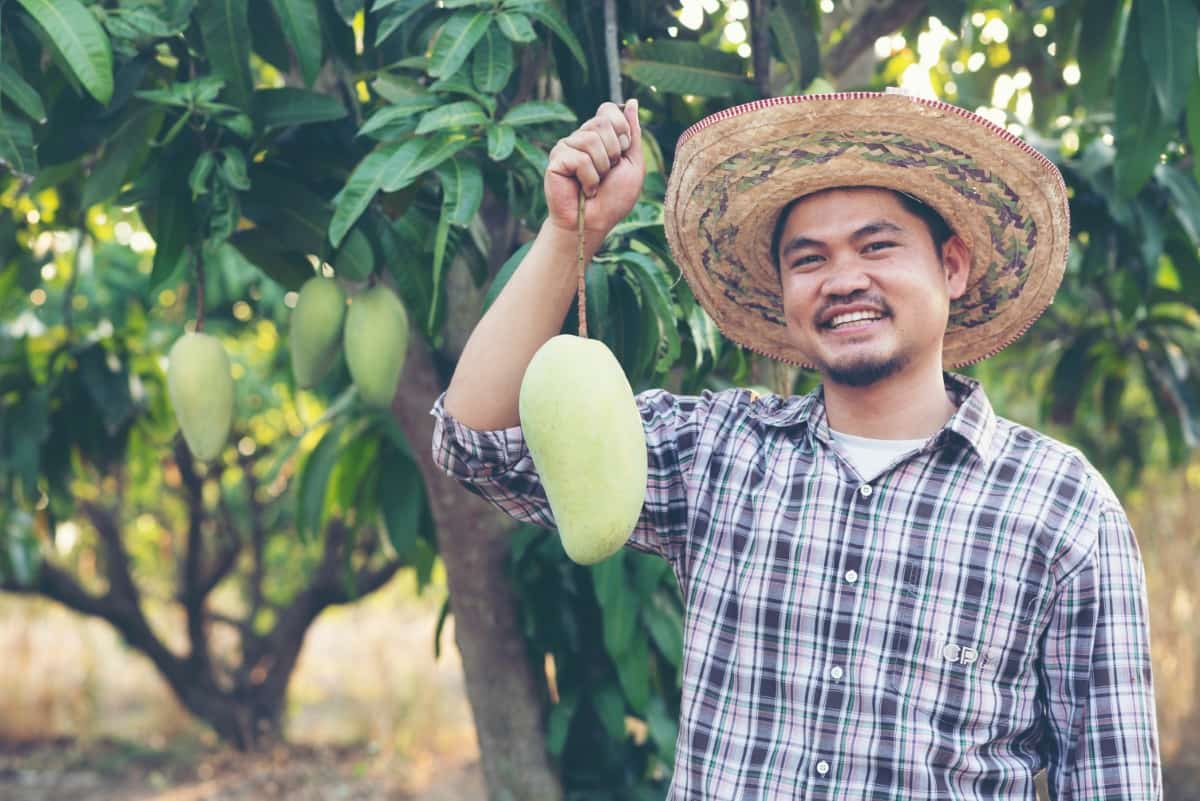
Conclusion
Delving into Thailand’s timeless mango farming, especially the cultivation of Katimon Mango, unveils a roadmap to successful planting and growth. This insight-rich journey equips enthusiasts and farmers with practical know-how, fostering a thriving mango harvest, contributing to the agricultural prosperity of the region.
- Types of Pesticides Used in Agriculture: A Beginner’s Guide
- Economical Aquaculture: A Guide to Low-Budget Fish Farming
- 15 Common Planting Errors That Can Doom Your Fruit Trees
- How to Make Houseplants Bushy: Effective Tips and Ideas
- Innovative Strategies for Boosting Coconut Pollination and Yield
- Pollination Strategies for Maximum Pumpkin Yield
- The Complete Guide to Chicken Fattening: Strategies for Maximum Growth
- Natural Solutions for Tulip Problems: 100% Effective Remedies for Leaf and Bulb-Related Issues
- Revolutionizing Citrus Preservation: Towards a Healthier, Greener Future
- Natural Solutions for Peony Leaf and Flower Problems: 100% Effective Remedies
- Maximizing Profits with Avocado Contract Farming in India: A Comprehensive Guide
- Natural Solutions for Hydrangea Problems: 100% Effective Remedies for Leaf and Flowers
- The Ultimate Guide to Choosing the Perfect Foliage Friend: Bringing Life Indoors
- From Sunlight to Sustainability: 15 Ways to Use Solar Technology in Agriculture
- The Ultimate Guide to Dong Tao Chicken: Exploring from History to Raising
- The Eco-Friendly Makeover: How to Convert Your Unused Swimming Pool into a Fish Pond
- Mastering the Art of Delaware Chicken Farming: Essentials for Healthy Backyard Flocks
- 20 Best Homemade Fertilizers for Money Plant: DIY Recipes and Application Methods
- How to Craft a Comprehensive Free-Range Chicken Farming Business Plan
- Brighten Your Flock: Raising Easter Egger Chickens for Beauty and Bounty
- How to Optimize Your Poultry Egg Farm Business Plan with These Strategies
- Subsidy for Spirulina Cultivation: How Indian Government Schemes Encouraging Spirulina Farmers
- Ultimate Guide to Raising Dominique Chickens: Breeding, Feeding, Egg-Production, and Care
- Mastering the Art of Raising Jersey Giant Chickens: Care, Feeding, and More
- Ultimate Guide to Raising Legbar Chickens: Breeding, Farming Practices, Diet, Egg-Production
- How to Raise Welsummer Chickens: A Comprehensive Guide for Beginners
- How to Protect Indoor Plants in Winter: A Comprehensive Guide
- Ultimate Guide to Grow Bag Gardening: Tips, Tricks, and Planting Ideas for Urban Gardeners
- Guide to Lotus Cultivation: How to Propagate, Plant, Grow, Care, Cost, and Profit
- Agriculture Drone Subsidy Scheme: Government Kisan Subsidy, License, and How to Apply Online
- Ultimate Guide to Raising Araucana Chickens: Breed Profile, Farming Economics, Diet, and Care
- Bringing Hydroponics to Classroom: Importance, Benefits of Learning for School Students
- Ultimate Guide to Raising Polish Chickens: Breed Profile, Farming Economics, Diet, and Care
- Ultimate Guide to Raising Australorp Chickens: Profile, Farming Economics, Egg Production, Diet, and Care
- Silkie Chicken Farming: Raising Practices, Varieties, Egg Production, Diet, and Care
- Sussex Chicken Farming: Raising Practices, Varieties, Egg Production, Diet and Care